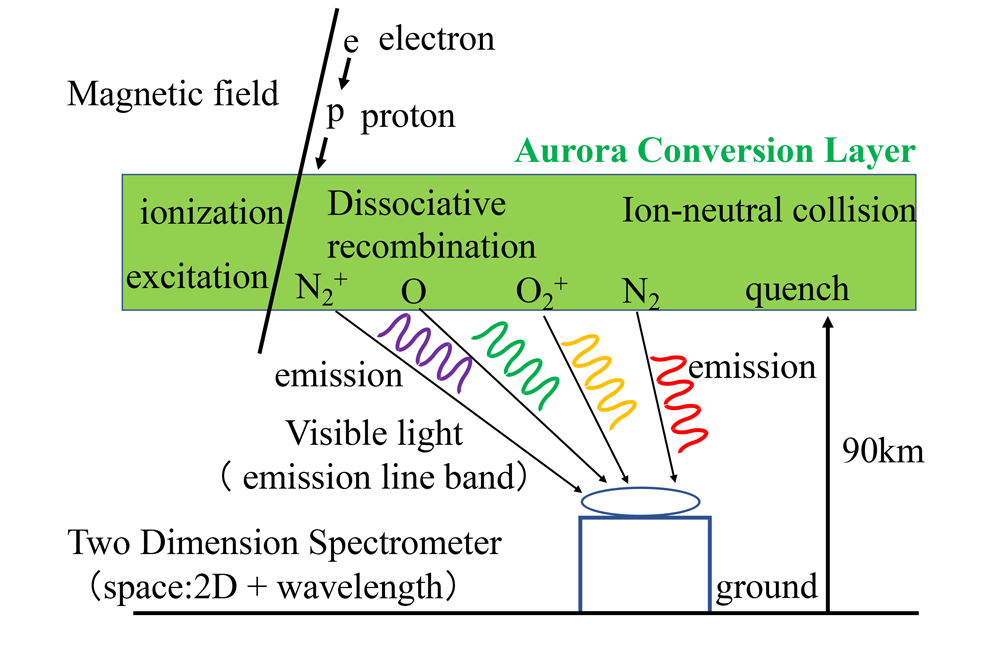PURPOSE
Auroras range in height from about 90 km to several hundred kilometers and discharge a variety of emission lines. The aurora is a conversion layer, where information from particles (electrons and protons) that have landed from space is converted into visible light by luminous phenomena and delivered to the ground (Figure). Observation of the spatiotemporal evolution of the spectrum (emission lines) of the auroral emission in the "auroral conversion layer" reveals the behavior of particles that have landed from the upper reaches of the universe and provides insight into the mechanism of the aurora's generation. However, a two-dimensional spatial distribution of the spectrum has rarely been observed, and its spatio-temporal evolution is not well understood.
In this project, a two-dimensional spectrometer with high-wavelength resolution will be used to precisely define the spatial distribution of auroral colors. This method is different from current mainstream auroral research that uses 2D images acquired by selecting several wavelengths, and is expected to bring a qualitative change to the research on the mechanism of auroral generation by obtaining information on the energy and spatial distribution of auroral landing particles from 2D spatial and 1D wavelength spectral images. It is expected to bring about a qualitative revolution in the study of auroral generation mechanisms.

